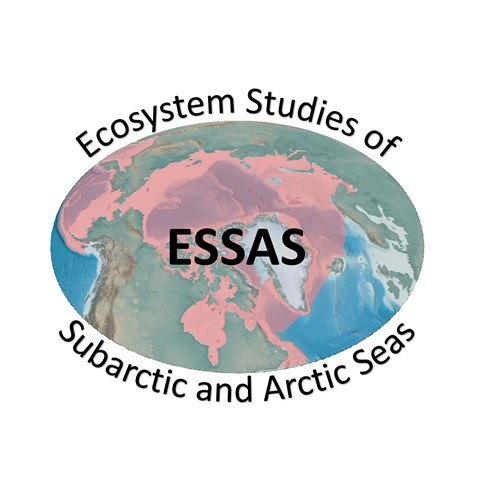Bering Sea Ecosystem Study – Integrated Ecosystem Research Program (BEST-BESIERP)
The aim of Bering Sea Ecosystem Studies (BEST) -Bering Sea Integrated Ecosystem Research Program (BESIERP) is to understand and predict consequences of climate change for Bering Sea marine ecosystems. It incorporates end to end studies of Bering Sea ecosystems including climate, physics, primary production, zooplankton, fish, seabirds, marine mammals and people. BEST is closely associated with the human dimensions programme in the Bering on climate change and will form part of the US IPY programme.
BEST-BESIERP priority research modules include:
• How is the disappearance of sea ice affecting the Bering Sea Ecosystem?
• What controls the abundance of nutrients on the Shelf and what is the influence of climate variability?
• What will be the ecosystem effects of a warmer and more stratified Bering Sea?
Japanese ESSAS (J-ESSAS)
The overall goal of J-ESSAS is to quantify the impact of climate variability on the structure and function of the Oyashio marine ecosystem in order to predict the ecosystem response to possible future climate change and its possible economic impact. J-ESSAS has 5 year funding from the Japan Society for the Promotion of Science (JSPS) and the Japanese Environment Agency.
J-ESSAS research foci include:
• Effects of Oyashio variability on ELS of pollock
• Relative importance of environment and plankton on pelagic and demersal fish in the Oyashio Shelf region
• Climate effects on walleye pollock, salmon, squid, sardine, etc.
• Environment linkages to biological processes and their time scales
• Factors influencing top-down vs. bottom-up processes
• Societal and economic impacts of climate variability.
Norwegian ESSAS (NESSAS)
The overall goal of NESSAS is to quantify the impact of climate variability and global change on the structure and function of the Barents Sea marine ecosystem in order to predict the ecosystem response to possible future climate change and its possible economic impact. NESSAS was funded from 2005 to 2008 by the Research Council of Norway and is a contribution to Norwegian GLOBEC.
NESSAS activities have included:
• Global ROMS model developed with hindcasts back to 1958
• Storm track database developed and role of storms on sea ice published
• Studies on the heat budget of the Barents Sea
• Investigations of effects of light on phytoplankton production
• Model hindcasts of phytoplankton production back to 1980
• Response of marine ecosystem around Norway to climate change
• Socio-economic consequences of climate change
• Participated in comparative studies within ESSAS
Iceland Sea Ecosystem (ISE)
The main goal of the Iceland Sea Ecosystem (ISE) program is to identify and evaluate inorganic and organic production processes in the Iceland Sea as a means to obtain a holistic picture of the function of its ecosystem. The second main goal is to measure and link together the processes that determine the life history pattern of the capelin stock in time and space. The project involves interdisciplinary work on hydrography and currents, nutrients, phytoplankton, zooplankton and fish (capelin). The final goal is to define the ecological position of the capelin stock and try to explain what has caused marked changes in its distribution and biology during recent years.











